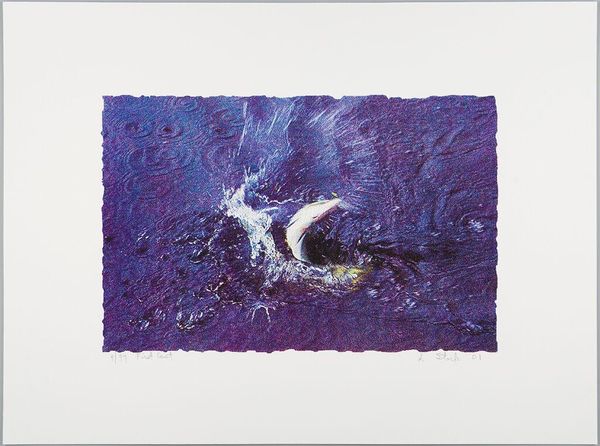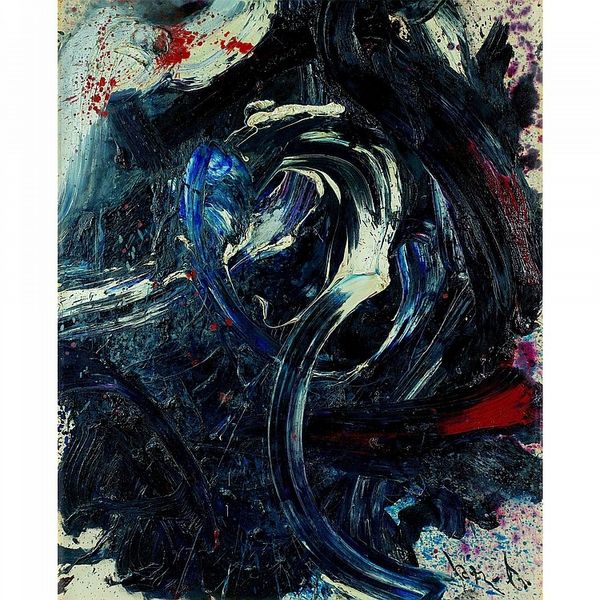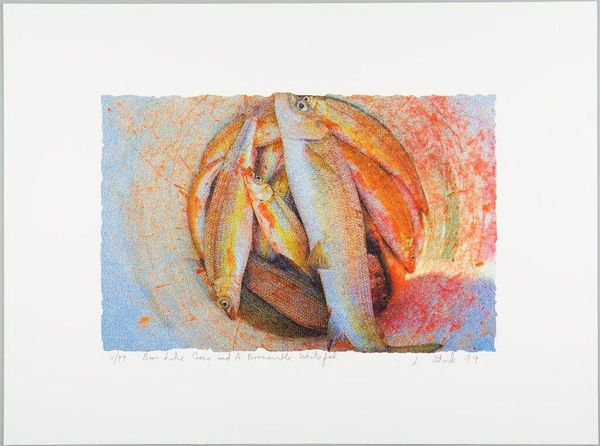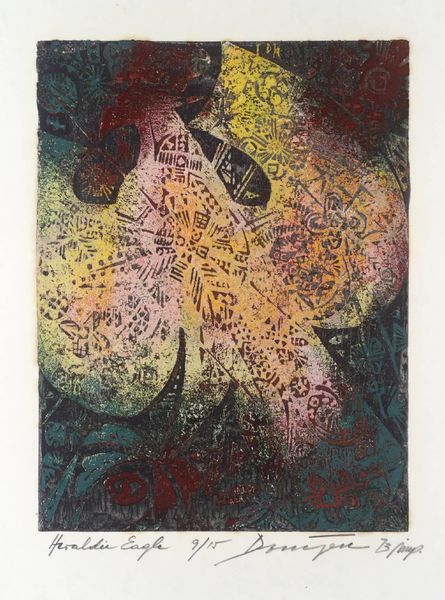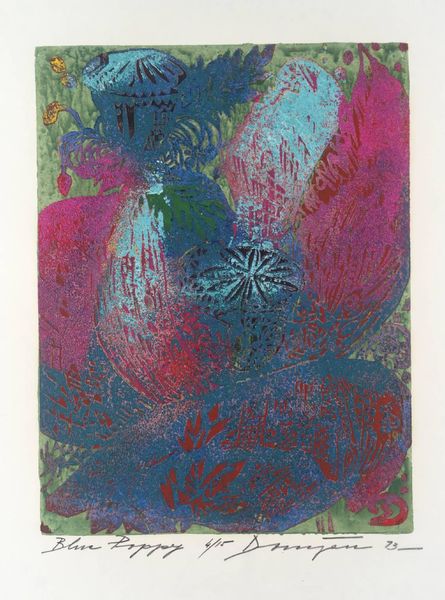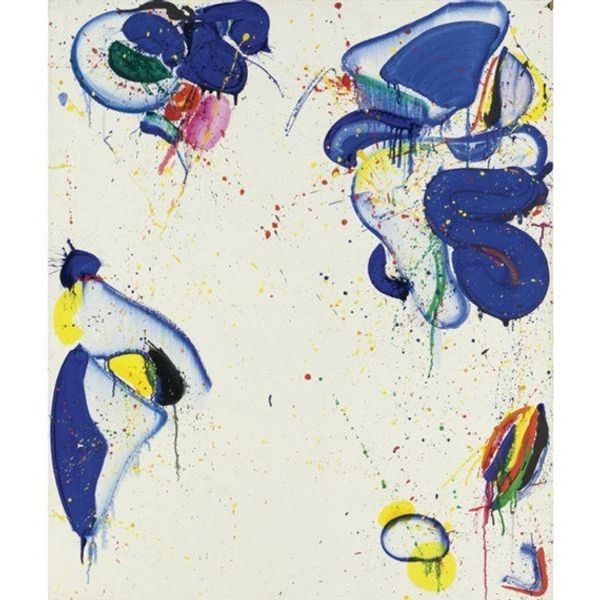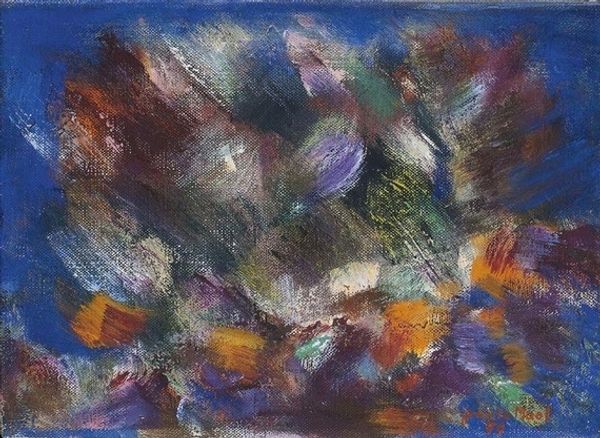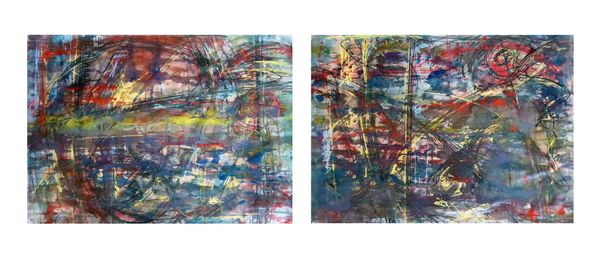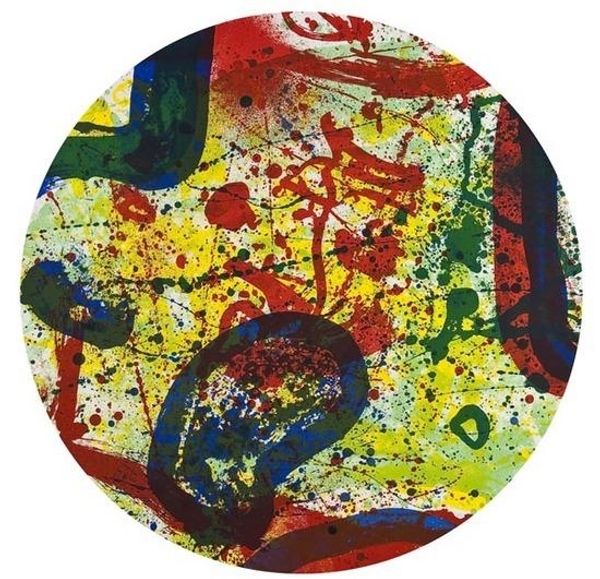
mixed-media, painting
#
mixed-media
#
organic
#
painting
#
biomorphic
#
abstraction
#
surrealism
Copyright: Jimmy Ernst,Fair Use
Curator: At first glance, it's a vibrant chaos, a bioluminescent reef teeming with impossible lifeforms. It kind of feels like synesthesia looks like. What’s the story here? Editor: This is *Surreal V* by Jimmy Ernst, painted in 1940, rendered in mixed media on canvas. Ernst, son of the celebrated Max Ernst, developed his own take on Surrealism after emigrating to the US, during the second world war. He became a prominent figure within the Abstract Expressionist movement. Curator: Mixed media explains the layered depth, that sense of things emerging and receding. The colors feel both inviting and unsettling. Editor: Definitely. And while it is considered surrealist, these biomorphic forms speak to something beyond pure fantasy. Ernst and other artists used abstraction as a means to represent things they maybe weren’t allowed to, under authoritarian pressure during the rise of totalitarianism. Organic abstraction became a powerful way to visualize freedom in opposition to rigid socio-political models. Curator: Ah, so these aren't just whimsical doodles—they're acts of defiance in paint. The way these tendrils reach, twist, and… is that a cage I see hinted at in the background? It all screams for a liberation of some kind. Like little rebellious thoughts blooming in a sterile mind. Editor: Precisely! The "organic" becomes a direct counterpoint to the geometric rigidity often associated with oppressive regimes. He suggests liberation is not just political; it's deeply personal and even spiritual. Think about that in 1940. Curator: Which would make sense with his context as someone displaced by the war, he probably lived and breathed that dichotomy every day. And perhaps, by refusing to depict anything concretely definable, he also sidesteps any easy co-opting of his message. Editor: Precisely. Art institutions have frequently struggled with defining ‘abstract art’. Ernst seemed committed to letting viewers derive their own understandings and personal relationship. Which means maybe the key element here is you and what the painting means to you. Curator: A defiant little pocket universe! You know, after looking closer, I'm beginning to see my own rebellious coral reef here. It's grown on me... like a beautiful, subversive fungus! Editor: See, there is that defiance in art, finding you and perhaps finding us all.
Comments
No comments
Be the first to comment and join the conversation on the ultimate creative platform.

